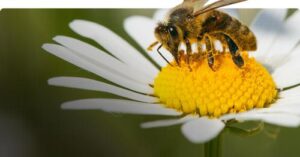Final report for FW21-387
Project Information
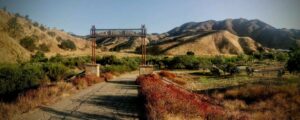 The American honey market is flooded with adulterated honey and consumers don't know how to determine which honey to buy. Until recently, there has been little technology for testing of honey to determine each honey's unique polyphenolic characteristics.
The American honey market is flooded with adulterated honey and consumers don't know how to determine which honey to buy. Until recently, there has been little technology for testing of honey to determine each honey's unique polyphenolic characteristics.
Rock Front Ranch's honey is produced in a geographically isolated area with a unique diversity of flora for bees to forage, including some plants with recognized healing components.
Rock Front Ranch used state-of-the-art Sweetwater Science Labs to determine the content and makeup of its Sage Honey. In the first year, the lab analyzed Rock Front Ranch's Sage Honey. In the second year, due to extreme historic drought conditions, the bees did not produce any wildflower honey. The lab used Liquid Chromatography Mass Spectroscopy to determine that pesticides and pollutants were not present, in addition to listing each flavonoid contained in the Sage Honey.
Rock Front Ranch has applied this research by describing the healing qualities of these flavonoids (for example, antioxidants and antiseptic compounds) and promoting the honey for its unique characteristics.
Workshop and presentations have been held in CA for beekeepers and consumers, to describe the results of the testing and the potential effect on consumer health of the identified compounds. The benefit of using the results of the study to enhance honey marketing were also discussed.
In addition, an informative brochure was prepared and disseminated to educate beekeepers and consumers on the health-giving qualities of honey.
PROGRESS REPORT as per timeline dates:
Collected and submitted sample Aug. 2021. Received analysis Nov. 30, 2021. Created NMR handouts and new NMR page on website Fall of 2021.
PROCESSING AND BOTTLING WAS DRASTICALLY IMPACTED BY THE DROUGHT.
Education continued, with online interviews, online presentations and a video. Due to Covid 19, no in-person classes or workshops were given except for one presentation to Rotary Club, sponsored by Allan Hancock College in Santa Maria, CA. attended by 25 people, 6 of whom were farmers, 4 were educators and 15 were members of the community in addition to a presentation also given at Allan Hancock College which was attended by agricultural students who had expressed an interest in becoming beekeepers.

Rock Front Ranch (RFR) proposed to utilize state-of-the-art testing from Sweetwater Science Lab in MO to use liquid chromatography mass spectroscopy to determine and analyze a wide range of flavonoids and polyphenols in RFR honey samples. Scientific studies show that it is the phenolic acids and flavonoids in honey which exhibit a wide range of biological effects and act as natural antioxidants. An article in Bee Culture, by Tianna Kolody, April 23, 2018 cites a study by Pyrzynska and Biesaga, in 2009, which states that it is the flavonoids and phenolic acids which give honey its unique flavors and antibiotic characteristics.
RFR's isolated geography and diversity of flora provide a rich source of certified glyphosate-free honey. Using Sweetwater's testing, we showed a direct connection between the components that make up the honey and its unique character, and demonstrated a high degree of antioxidant properties which could prove the honey to be an excellent immune-system booster. During the time of COVID 19, this research becomes increasingly important as consumers are looking for natural foods that will assist them in staying healthy.
RFR continues to educate consumers on its findings by creating consumer-friendly marketing brochures, and has presented 2 workshops, a Zoom presentation for beekeepers and consumers, and a class for agricultural students, detailing the findings and the implications for better consumer health.
Workshops for farmers were presented via Zoom.
Informative articles were shared on social media. Bee gold: Honey as a superfood (knowablemagazine.org)
The timeline for the project is an Xcel sheet that includes dates, people responsible for each activity, milestones, and impacts on farmer/beekeepers, the market, and knowledge of the international community. For more details on each activity, please refer to Research Plan and Education Plan sections in this proposal.
Cooperators
- - Technical Advisor (Researcher)
- - Technical Advisor
Research

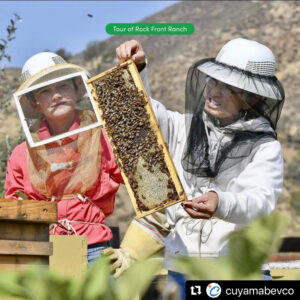

Research Objective 1) Research on how foraged plant characteristics may affect the therapeutic value and taste of the two types of honey that we market. The testing will be performed by Sweetwater Science Labs using modern statistical software in combination with advanced analytical instrumentation [Liquid Chromatography Mass Spectroscopy (LCMS)]. Research began in 2021 by establishing a baseline for comparison of the more comprehensive study to be completed in summer 2022.
Research Objective 2) Tie the results of Research Objective 1 to an observational study of what plants are blooming at Rock Front Ranch at the time the honey was produced. Take special note of any plants with recognized therapeutic value. Correlate the honey characteristics determined by the testing with observed bloom times and correlate that to existing research on the therapeutic characteristics of the plants.
Black Sage and Purple Sage blooms were identified on the ranch in March of 2022.
Potential healing characteristics of Black Sage and Purple Sage have been identified.
The healing characteristics of the plants found in our research will be compared with the honey, based on polyphenol and flavonoid content of the honey as identified by Sweetwater Science Labs.
Research Objective 3) Determine what therapeutic benefits (e.g. wound healing and cough suppression) could be derived from the identified flavonoids and polyphenols.
Sweetwater Science Labs specializes in food authenticity testing, with an emphasis on honey testing. They use a combination of liquid chromatography mass spectroscopy (LCMS) and nuclear magnetic resonance (NMR) for the most complete results in flavonoid and phenolic testing. This methodology is so new, and this advanced equipment is so necessary for it, that there is very little information available on these components of honey. We have found studies in China and Poland, but, in the US, our study may be the first of its kind. It is important because it can potentially prove that honey has antiseptic and antibiotic actions, as well as a host of other potentially beneficial effects. See studies below.
Dr. James Gawenis, PhD, Sweetwater's co-founder, chemist and CEO will work closely with Alisha Taff and the WIHPA team led by Nancy Smith on the analysis and dissemination of results. Sweetwater Science Labs has scheduled a presentation in 2022 at the Midwest Regional Chapter of the American Chemical Society convention in Iowa. The abstract of the presentation will be finished in July of 2022 and will be attached to this grant. The abstract will include a comparison of the honey from 4 different hives as well as a validation of the plant source. The presentation will be by Dr. Michael Greenlief and Dr. Jim Gawenis.
In addition, Dr. Gawenis and Dr. Greenlief, who also teaches and collaborates at the University of Missouri, will oversee the publication of a scientific study detailing the methods used for honey analysis, the effect of the isolated geography of Rock Front Ranch and its diverse flora on the scientific components of the honey, and the outcomes of the comparison between the honey from 4 different hives.
Due to the effects of the drought that Rock Front Ranch is experiencing, the initial 2021 overall wildflower sampling did not occur but samples of Black Sage and Purple Sage were obtained. Because Black Sage has been found blooming in March 2022 at Rock Front Ranch, it is assumed that samples of Black Sage Honey and Purple Sage Honey will be collected in summer of 2022 and sent to Sweet Science Labs for analysis, the results of which will be included in the presentation at the aforementioned Midwest Regional Chapter of. The samples will be of honey that is extracted and centrifuged, but not heated or adulterated.
A record of flower bloom time that corresponds with bee foraging will be kept by the Principal Investigator, Alisha Taff. That record will be correlated with the final results of testing to inform which flowers seem to contribute to the most flavonoid and polyphenol content.
Timing of testing will correspond to the collection of samples.
a) Tested initial samples of stored 2020 honey to establish a baseline.
b) Tested samples of 2021 Black Sage and Purple Sage honey.
c) Harvest and process honey samples from 2022 crop of honey in July and August 2022. Send to Sweetwater Science Labs.
e) Receive analysis from lab and compare to observed bloom times on the ranch.
Publications will include a scientific study published with the assistance of Dr. James Gawenis and associates from the University of Missouri in late summer/early fall of 2022.
In a 2009 study by Krystyn Pyrynska and Magdalena Biesaga (Dept. of Chemistry, University of Warsaw, Poland), Analysis of phenolic acids and flavonoids in honey, the abstract states: "Honey is rich in phenolic acids and flavonoids, which exhibit a wide range of biological effects and act as natural antioxidants. The analysis of polyphenols has been regarded as a very promising way of studying floral and geographical origins of honeys. . .We pay particular attention to. . .high-performance liquid chromatography and electrophoresis)." this study gave us confidence that we are on the right track with our proposal. As mentioned, we are using a private laboratory, Sweetwater Science Labs, to use high-performance liquid chromatography as well as nuclear magnetic resonance to determine the number of types of phenolic acids and flavonoids to enable us to educate consumers as to the therapeutic nature of our honey in particular and all pure, unadulterated honey in general.
Additional studies include:
Analysis of Polyphenols in Honey: Extraction, Separation and Quantification Procedures. Pascual-Mate et al. 13 July 2017. Spain.
The abstract states: "High performance liquid chromatography with ultraviolet or mass spectrometry detectors is by far, the most commonly employed instrumental procedure to separate and quantify polyphenols in honey."
This study gives us confidence that we are on the right track with our testing program.
Phenolic acids and flavonoids profiles of commercial honey from different floral sources and geographic sources. Yiuchung Cheung et al. March 4, 2019. China.
The abstract states: "Honey is well-known for its nutritional and medicinal values since prehistoric times. In the present study, 40 honey samples were collected from supermarkets in China. . .These samples were explored for the detection of 16 phenolic acids and 14 flavonoids by employing high-performance liquid chromatography (HPLC). . .it was observed that certain phenolic compounds significantly contributed towards the classification of honey samples. . .Thus, this systematic study provides a fundamental knowledge of honey quality for therapeutic product development."
Honey for Nutrition and Health: A Review. Stefan Bogdanov et al. Article, Journal of the American College of Nutrition. 2013
The abstract states: "Due to the variation of botanical origin honey differs in appearance, sensory perception and composition. The main nutritional and health relevant components are carbohydrates. . .but also about 25 different oligosaccharides. It contains small amounts of proteins, enzymes, amino acids, minerals, trace elements, vitamins, aroma compounds and polyphenols. The review . . . shows that honey has a variety of positive nutritional and health effects, if consumed at higher doses of 50 to 80 g intake."
Nov 30 2021 Sweetwater Analysis
Two major challenges in 2021, the pandemic and an extreme drought, affected our ability to achieve the level of results we had hoped for in terms of the variety of wildflower floral sources. However, we were able to harvest honey samples of Black and Purple Sage Honey that were sent to Sweetwater Laboratories for analysis using Nuclear Magnetic Resonance to obtain full honey profiles. (Attached above.)
projects.sare.org/…/Analysis_of_phenolic_acids_and_flavonoid.pdf
Research is ongoing into the healing properties of honey in general. Our study builds on this research and add to the body of knowledge around the healing properties of honey and specific plant properties that contribute to the makeup of the honey.
The attached scientific study by Krystyna Pyrzynska and Magdalena Biesoga, published in Trends in Analytical Chemistry, Vol. 28, No. 7, 2009 will be used to build our research upon. The advanced equipment available from Sweetwater Science Labs and the University of Missouri chemistry department under Dr. Michael Greenlief served to enable us to obtain more detailed and specific information about the composition of our honey in relationship to the flowers that are available for the bees to forage than the 2009 study was able to provide. Sweetwater Science Labs also compared the study produced in conjunction with this project with a 2020 report they prepared previously for Rock Front Ranch.
The results of a November 30, 2021 Sweetwater Analysis which are attached, show no discernible pesticides or antibiotics in Rock Front Ranch honey.
A challenge caused by the ongoing drought at Rock Front Ranch is that the number of floral sources have been far fewer than they were in 202o. In 2021 and 2022, only Black Sage and Purple Sage bloomed. This challenge was met by increased research that we performed into the possible medicinal benefits of Black Sage and Purple Sage. We researched these two herbs more deeply than originally planned because they bloomed during the drought, and we had no other floral sources as the the drought continued. The overall results of the project will be served by the deeper research, and our use of NMR testing in our marketing will continue with more emphasis on these two herbs that are over 51% present in our "Black and Purple Sage Honey". It is required that a floral source be 51% or over in order for a honey to be named for that source. In the past, we moved the bees into the Black and Purple Sage fields and then removed them in order to preserve the validity of our floral source. Our "Wildflower Honey" has been more threatened by the drought, as the multifloral nuances we have obtained in the past were unavailable due to a dearth of wildflowers. In 2021 and 2022, we were unable to bottle any wildflower honey, although the Black and Purple Sage Honey was plentiful.
projects.sare.org/…/Analysis_of_phenolic_acids_and_flavonoid.pdf
Flowers identified by Rock Front Ranch that have reputed medicinal qualities were intended to be verified in the honey profile by Sweetwater Science Labs. However, none of the following flowers bloomed in 2021 or 2022:
Yerba Buena: Full of antioxidants. Also contains caffeine. Reputed to give energy boost. Also reputed to improve skin quality, soothe inflammation, soothe stomach issues (inhaling scent), relieve asthma (crush leaves and inhale scent), build immunity (contains catechins and polyphenolics that could be identified in the honey with NMR testing. This herb is susceptible to drought and was unavailable for our testing.
Manzanita: (Rock Front Ranch staff watched for manzanita to bloom this year and found none.) Used to treat a variety of digestive issues and promote relaxation. Considered relatively safe, but it is recommended that you check with a health practitioner before using, especially if you have serious health issues or are taking prescribed medication.
Black and Purple Sage-artemisia nova, salvia mellifera: (Bloomed prolifically on the ranch in spring of 2022.)Used externally to relieve sore muscles and joints.
MARKETING RESEARCH:
Polls were conducted on social media and in person in stores asking customers whether their interest in purity and potentially healing components is low, medium or high. We compared sales pre- and post- our NMR testing advertising campaign to determine whether testing is helpful in marketing honey. There has been very little research done in this area and the results will inform the marketing efforts of other farmers. Results are being shared with other farmers, universities, and in our presentations. Many of our customers responded that the testing gave them a new degree of confidence in the safety, purity and health-giving properties of our honey.
We were able to add a number of wholesale customers based largely on their interest in selling honey that has been tested for purity and the presence of flavonoids and polyphenols. Sales of Black and Purple Sage Honey have increased as a result of our marketing campaign.
Research Outcomes
Education and Outreach
On World Bee Day in 2021, Alisha Taff participated in a facebook live presentation describing the risks of honey contamination and the value of NMR testing.
On February 22, 2022, Alisha Taff did a Zoom presentation through Allan Hancock College, on beekeeping in general, including the importance of testing for purity.
Plans are underway for a facebook live presentation for farmers and consumers through SLO Food Coop, using facebook live. SLO Food Coop will bring many participants to the table and will handle the logistics of the presentation. Alisha Taff will make the presentation.
2 presentations were given to middle school children at Central Coast Unified School District.
1 class. In March of 2022, Alisha Taff presented an in-depth class to agricultural students at Allan Hancock College. These were agricultural students who have hopes of being beekeepers.
Participation Summary:
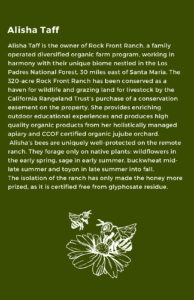
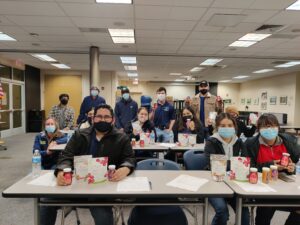
We posted this photo on World Bee Day 2022.
RFR's Honey Sell Sheet was updated to feature artistic renderings of Cuyama Valley wildflowers as well as information about NMR testing and it emphasizes the characteristic of glyphosate free honey.
On May 20, 2021, Alisha Taff was interviewed on facebook live. The topic was broadly about beekeeping, but her emphasis was on the importance of bee health, the influence of glyphosate (the absence of which we identify using NRM testing of our honey), and the importance of bee health in general on consumers and on the environment.
On February 8, 2022, Alisha gave a presentation to the Rotary Club of Santa Maria, CA through Allan Hancock College. This presentation included the importance of bee health and the use of NMR testing to determine the purity of honey.
Two discussions/presentations were presented via Zoom through Allan Hancock College of Santa Maria, CA.
Two outdoor presentations were given to middle school children of Central Coast Unified School District.
Below is a link to our Rock Front Ranch facebook page World Bee Day interview.
Consultations:
3 consultations with Erin Krier, agricultural teacher at Allan Hancock College.
Consultation with Hunter Francis at Allan Hancock College.
Consultation with Tim LaSalle of Rodale Press.
Consultation with Johnny Cosgrove, meadmaker, on mead-making with RFR honey.
Curricula and factsheets Buyer sheets, class curricula
On-farm demonstration for Cuyama Valley event with The BuckHorn
On-line Trainings-Zoom presentations for aspiring beekeepers; Roundtable discussion with Allan Hancock College
Published press articles, newsletters
Tour with Buckhorn
Webinars, Talks and Presentations-2 webinars, 2 presentations, 1 talk (online interview on World Bee Day)
Other Educational Activities on facebook
Education and Outreach Outcomes
The challenge of extreme drought rendered our study less robust than we originally intended. By increasing the number of presentations given, and increasing our NMR testing marketing efforts we hope to accomplish the same results of educating the public and increasing farmer income by using testing to verify the purity and qualities of our honey.
The use of Sweetwater Labs to perform the testing gives us verifiable credentials and has sparked the interest of research scientists and academics, one of whom plans to write a scientific study of our project. The results of the study will be presented through the chemistry department at the University of Missouri at Columbia. This approach will improve consumer education and spark interest in the scientific community as well as among knowledgeable consumers.
Our approach relies heavily on our ability to reach consumers with the importance of honey purity and the confidence that NMR testing gives us that our honey is pure. The biggest challenge we have had is the inability to host on-farm workshops due to Covid. Currently, as Covid restrictions lessen, we have been able to do more in-person education. We are confident that the venues we have been able to use (Zoom, Facebook Live, and, more recently, a public presentation, have allowed us to achieve the same type of educational and marketing results that our original plan would have provided. In fact, we think our reach has actually increased due to our efforts to provide the information virtually that would have been limited to a smaller group of participants in classes and workshops.
An insight we have gained from that result is that we should continue to use online teaching even after the pandemic, in order to reach more farmers and consumers. In the future, we will increase our online educational and marketing efforts, and will advise other beekeepers to do the same.
